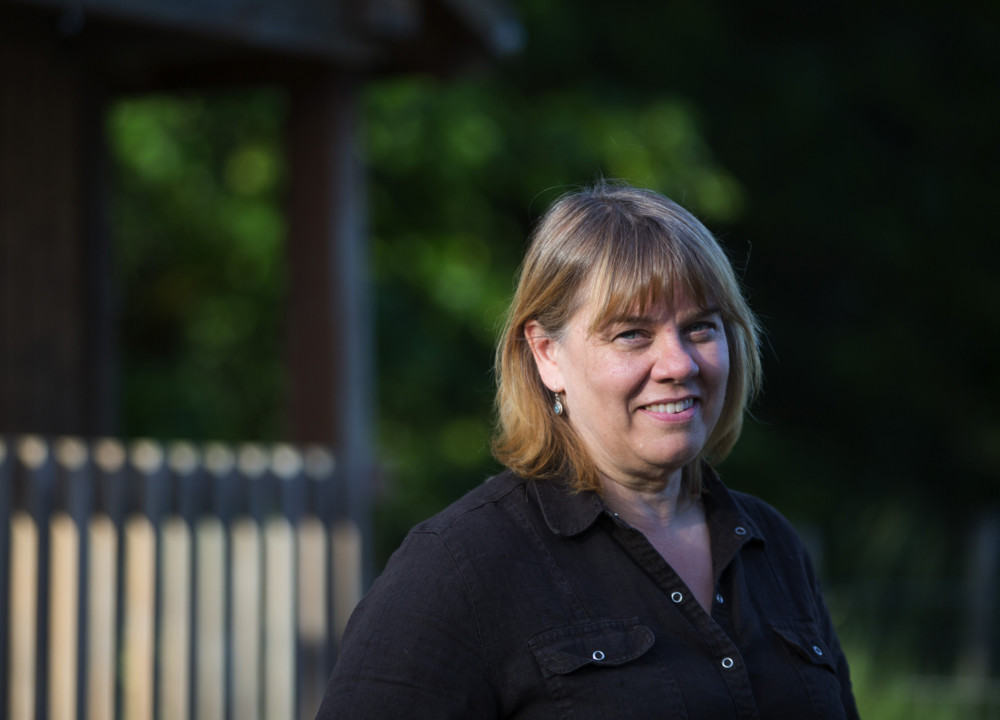By George Erb
The Seattle Times
WWR Article Summary (tl;dr) This feature is about a woman coming to terms with the financial realities of her life. Melissa Tatro loves the farm she owns outside Seattle. Its financial realities however keep bringing her to an uncomfortable crossroads. Keeping the farm could jeopardize her ability to save for retirement. Selling it could force her to part with a dream.
SEATTLE
Melissa Tatro’s “hobby farm” outside Seattle supports three pigs, 25 chickens and a bunch of honey bees. It has 25 fruit trees, 45 blueberry bushes and hundreds of vegetables.
Tatro, 53, lives in a house on the 2-acre property, and loves it.
But this particular farm also comes with some less-than-bucolic finances.
The monthly mortgage payment of about $2,280 consumes a little more than half of Tatro’s take-home pay and rental income. Next year she is committed to buy her ex-husband’s equity in the property for $38,000, likely adding to her $320,000 mortgage.
Although Tatro’s heart is in the farm, its financial realities keep bringing her to an uncomfortable crossroads. Keeping the farm could jeopardize her ability to save for retirement. Selling it could force her to part with a dream.
“There’s a point where my romantic side needs to have a face to face with reality,” Tatro said.
So she asked for some free financial advice, and the Puget Sound Chapter of the Financial Planning Association connected Tatro with volunteer Kathy Henningsen, a certified financial planner in the Seattle area.
Tatro’s desire to own a small farm is understandable. She loves to garden, and in 2014 she became the outreach coordinator for the King Conservation District, an agency that advises property owners on natural-resource management.
That same year Tatro and her then-husband bought a 1970s house and adjacent acreage for $428,000, property records show. They both dreamed of working the land as a small farm.
But the marriage ended in November 2015, leaving Tatro with the house, the animals, the crops, and the expenses.
In addition to the $320,000 mortgage, Tatro pays $350 a month for a leased car. She also needs money for remodeling projects on the 42-year-old house.
She lives on a middle-class income. The annual gross income from her job is about $50,800. In March she began renting out a room, bringing in an additional $16,800 a year. For now, Tatro has no income from the farm.
Tatro also receives $13,200 a year in alimony, although the payments end in November 2017. That’s when Tatro must buy her ex-husband’s stake in the farm under the terms of the divorce agreement.
Her two children, a son and a daughter, are adults.
She has about $7,000 in savings, but little in her retirement accounts. Tatro cashed out a $20,000 401(k) last year to pay down debt and create a pool of emergency cash. Now she’s starting over again, and the current balance of her 401(k) is about $4,500.
One bright spot for Tatro’s retirement is her enrollment in the Public Employees Retirement System, the state pension program.
Tatro has worked long enough for public agencies to be fully vested, although she does not know how large her retirement benefit will be.
Henningsen examined Tatro’s finances and saw red flags if she keeps the farm.
“It was going to be difficult to do that and save for retirement long term,” Henningsen said.
She estimated that Tatro needs between $300,000 and $500,000 in retirement savings on top of her Social Security and pension income to avoid running out of money when she stops working.
The two women agreed on a two-phase plan for getting Tatro on stronger financial footing. And the pivot point between the two phases was the sale of the farm.
For the first phase, between now and the summer of next year, Tatro would lay the groundwork for putting the property on the market. She would work with a real-estate agent on ways to enhance the property’s value, and her rental income could pay for some of the improvements.
Tatro would also use this time to step up her retirement savings. She has already increased her contributions to her 401(k).
The second phase kicks in after the farm is sold. Tatro would use the net proceeds from the sale to buy a smaller home with a mortgage of less than $220,000.
The smaller mortgage would reduce her monthly payments, lower her living expenses and free up cash for savings.
“Because she has to make up ground to save for retirement, we want to keep those living expenses modest,” Henningsen said.
Tatro could also supplement her income by renting a room or by taking on a second, part-time job.
Henningsen advised Tatro to delay her retirement until she turns 67, when she qualifies for full Social Security benefits.
“It was a really good dose of reality,” Tatro said of Henningsen’s advice.
Still, the longer, warmer days of spring rekindled the farm’s allure for Tatro. If it were a perfect world, she said, “I would live there forever.”
Tatro is torn. In recent days she and her daughter, a nurse, have started exploring the possibility of joint ownership in the farm as a way to keep it in the family.
What will she do? It’s hard to say, although Tatro knows that she will have to make a decision after the farm goes through another cycle of the seasons and reawakens again next spring. A difficult choice may await her.














































































































































































































































































































































































